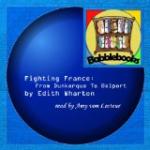Reluctantly we turned from this interval in the day’s sad round, and took the road to La Panne. Dust, dunes, deserted villages: my memory keeps no more definite vision of the run. But at sunset we came on a big seaside colony stretched out above the longest beach I ever saw: along the sea-front, an esplanade bordered by the usual foolish villas, and behind it a single street filled with hotels and shops. All the life of the desert region we had traversed seemed to have taken refuge at La Panne. The long street was swarming with throngs of dark-uniformed Belgian soldiers, every shop seemed to be doing a thriving trade, and the hotels looked as full as beehives.
June 23rd LA PANNE.
The particular hive that has taken us in is at the extreme end of the esplanade, where asphalt and iron railings lapse abruptly into sand and sea-grass. When I looked out of my window this morning I saw only the endless stretch of brown sand against the grey roll of the Northern Ocean and, on a crest of the dunes, the figure of a solitary sentinel. But presently there was a sound of martial music, and long lines of troops came marching along the esplanade and down to the beach. The sands stretched away to east and west, a great “field of Mars” on which an army could have manoeuvred; and the morning exercises of cavalry and infantry began. Against the brown beach the regiments in their dark uniforms looked as black as silhouettes; and the cavalry galloping by in single file suggested a black frieze of warriors encircling the dun-coloured flanks of an Etruscan vase. For hours these long-drawn-out movements of troops went on, to the wail of bugles, and under the eye of the lonely sentinel on the sand-crest; then the soldiers poured back into the town, and La Panne was once more a busy common-place bain-de-mer. The common-placeness, however, was only on the surface; for as one walked along the esplanade one discovered that the town had become a citadel, and that all the doll’s-house villas with their silly gables and sillier names—“Seaweed,” “The Sea-gull,” “Mon Repos,” and the rest—were really a continuous line of barracks swarming with Belgian troops. In the main street there were hundreds of soldiers, pottering along in couples, chatting in groups, romping and wrestling like a crowd of school-boys, or bargaining in the shops for shell-work souvenirs and sets of post-cards; and between the dark-green and crimson uniforms was a frequent sprinkling of khaki, with the occasional pale blue of a French officer’s tunic.




